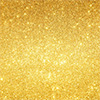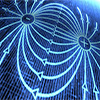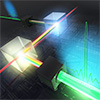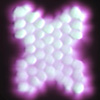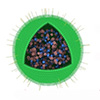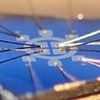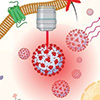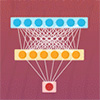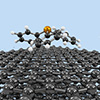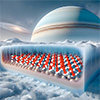Relationship between religion and science
The relationship between religion and science involves discussions that interconnect the study of the natural world, history, philosophy, and theology.
Even though the ancient and medieval worlds did not have conceptions resembling the modern understandings of "science" or of "religion", certain elements of modern ideas on the subject recur throughout history. The pair-structured phrases "religion and science" and "science and religion" first emerged in the literature during the 19th century. This coincided with the refining of "science" (from the studies of "natural philosophy") and of "religion" as distinct concepts in the preceding few centuries—partly due to professionalization of the sciences, the Protestant Reformation, colonization, and globalization. Since then the relationship between science and religion has been characterized in terms of 'conflict', 'harmony', 'complexity', and 'mutual independence', among others.
Both science and religion are complex social and cultural endeavors that may vary across cultures and change over time. Most scientific (and technical) innovations prior to the scientific revolution were achieved by societies organized by religious traditions. Ancient pagan, Islamic, and Christian scholars pioneered individual elements of the scientific method. Roger Bacon, often credited with formalizing the scientific method, was a Franciscan friar. Confucian thought, whether religious or non-religious in nature, has held different views of science over time. Many 21st-century Buddhists view science as complementary to their beliefs. While the classification of the material world by the ancient Indians and Greeks into air, earth, fire, and water was more metaphysical, and figures like Anaxagoras questioned certain popular views of Greek divinities, medieval Middle Eastern scholars empirically classified materials.
Events in Europe such as the Galileo affair of the early 17th century, associated with the scientific revolution and the Age of Enlightenment, led scholars such as John William Draper to postulate (c. 1874) a conflict thesis, suggesting that religion and science have been in conflict methodologically, factually and politically throughout history. Some contemporary atheistic philosophers/scientists (such as Richard Dawkins, Lawrence Krauss, Peter Atkins, and Donald Prothero) subscribe to this thesis. However, the conflict thesis has lost favor among most contemporary historians of science.
Many scientists, philosophers, and theologians throughout history, such as Francisco Ayala, Kenneth R. Miller, and Francis Collins, have seen compatibility or interdependence between religion and science. Biologist Stephen Jay Gould, other scientists, and some contemporary theologians regard religion and science as non-overlapping magisteria, addressing fundamentally separate forms of knowledge and aspects of life. Some theologians or historians of science and mathematicians, including John Lennox, Thomas Berry, and Brian Swimme propose an interconnection between science and religion, while others such as Ian Barbour believe there are even parallels.
Public acceptance of scientific facts may sometimes be influenced by religious beliefs such as in the United States, where some reject the concept of evolution by natural selection, especially regarding Human beings. Nevertheless, the American National Academy of Sciences has written that "the evidence for evolution can be fully compatible with religious faith",
a view endorsed by many religious denominations.
Check out these latest Nanowerk News:

